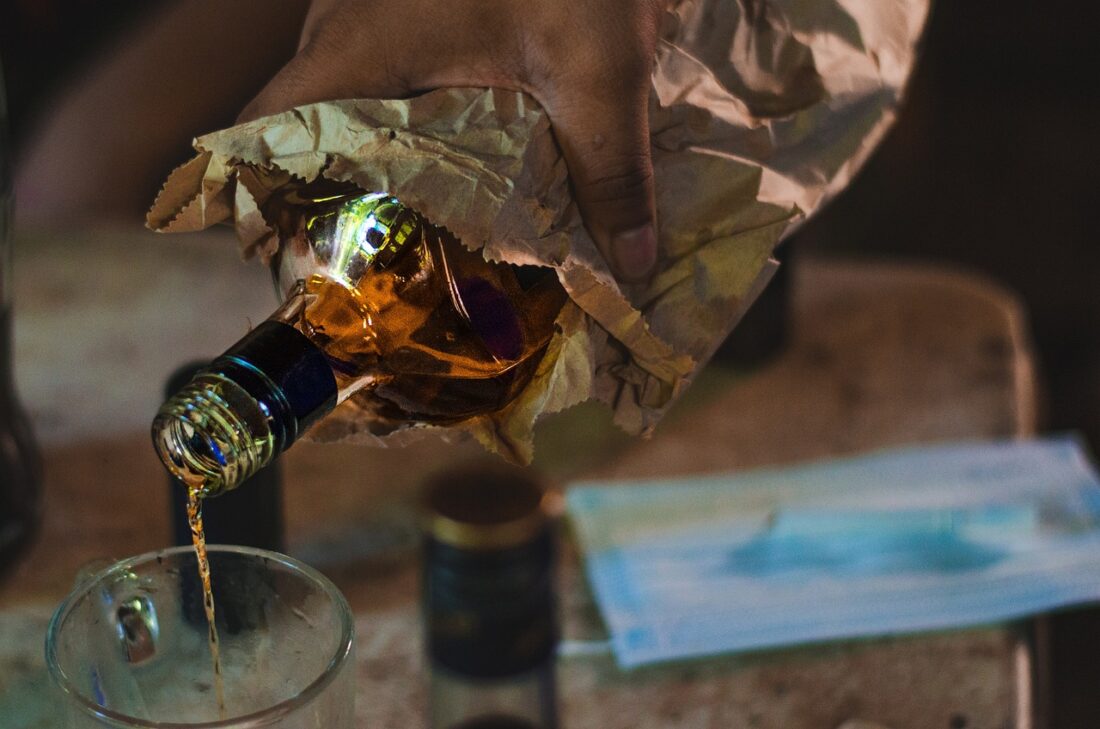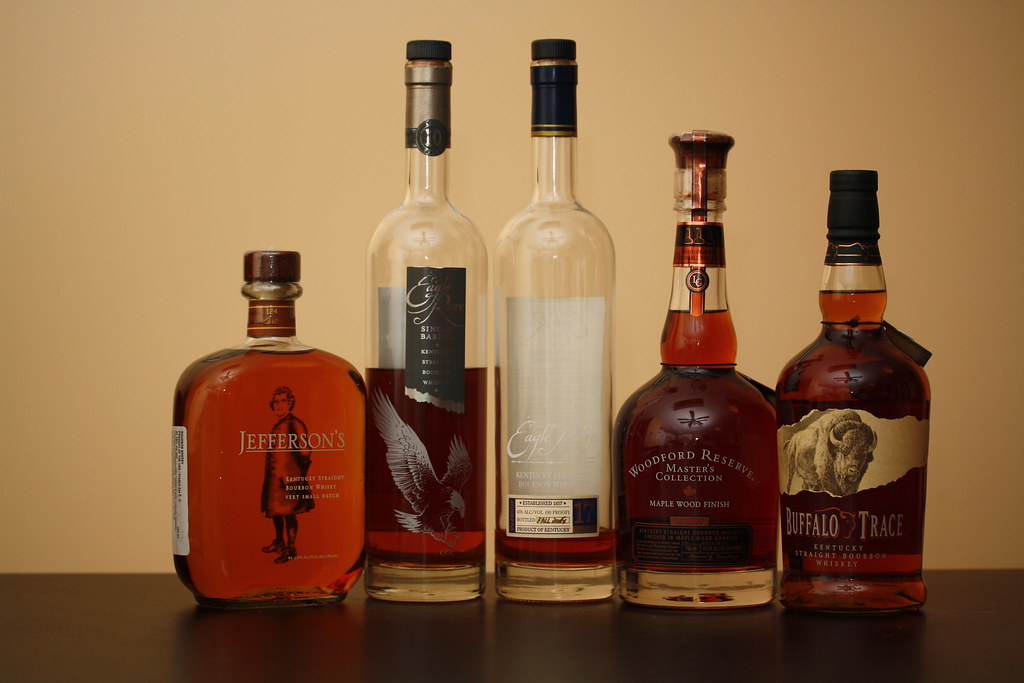
Bourbon is a type of whiskey that is distilled from a mixture of grains, primarily corn, and aged in oak barrels. The aging process is one of the most important factors in determining the flavor and quality of the final product. But how long does bourbon have to be aged before it can be considered bourbon?
Table of Contents
Legal Definition of Bourbon
Bourbon is a type of whiskey that is legally defined in the United States. According to Title 27 of the Code of Federal Regulations, bourbon must meet the following criteria:
- It must be made in the United States.
- It must be made from a grain mixture that is at least 51% corn.
- It must be aged in new, charred oak barrels.
- It must be distilled to no more than 80% alcohol by volume (ABV).
- It must be bottled at no less than 40% ABV.
These regulations ensure that bourbon is made in a specific way and meets certain standards. For example, the use of new, charred oak barrels gives bourbon its distinctive flavor and color.
Additionally, the requirement that bourbon must be aged in new barrels means that the barrels cannot be reused. This is different from other types of whiskey, such as scotch, which can be aged in used barrels.
Minimum Aging Requirements
Bourbon must meet certain requirements to be considered “bourbon.” One of these requirements is the minimum aging period.
Bourbon must be aged for at least two years in new, charred oak barrels. Used barrels are not accepted. However, it’s important to note that bourbon can be aged for longer than two years, and many bourbons are aged for several years to achieve a desired flavor profile.
The aging process is crucial to the development of the flavor and character of bourbon. During this time, the whiskey interacts with the wood of the barrel, which imparts flavor and color to the spirit. The longer the bourbon is aged, the more complex and nuanced the flavor becomes.
It’s worth noting that the minimum aging period applies only to straight bourbon. Other types of bourbon, such as bottled-in-bond bourbon and high-rye bourbon, may have different aging requirements. For example, bottled-in-bond bourbon must be aged for at least four years and bottled at 100 proof, or 50% ABV.
Effects of Aging on Flavor
Bourbon gets its distinct flavor from aging in charred oak barrels. The aging process is a crucial step in the production of bourbon, as it contributes to the flavor, aroma, and color of the final product.
During the aging process, the bourbon interacts with the charred oak barrel, which imparts various flavors and aromas to the spirit. The longer the bourbon is aged, the more complex its flavor profile becomes.
Some of the primary flavors that are imparted to bourbon during the aging process include vanilla, caramel, and oak. These flavors are a result of the interaction between the bourbon and the charred oak barrel. The oak barrel also contributes to the color of the bourbon, giving it a rich amber hue.
The aging process also helps to mellow out the harshness of the alcohol, resulting in a smoother and more enjoyable drinking experience. As the bourbon ages, it becomes more refined, with a more balanced flavor profile and a smoother finish.
 photo credit: www.flickr.com
photo credit: www.flickr.com
Comparison with Other Whiskies
One major difference between bourbon and other whiskies is the type of barrel used for aging. Bourbon must be aged in new charred oak barrels, while other whiskies may be aged in barrels that have been previously used for other types of alcohol. This can give other whiskies a different flavor profile than bourbon.
Another difference between bourbon and other whiskies is the mash bill. Bourbon must have a mash bill of at least 51% corn, while other whiskies may have different ratios of grains in their mash bills. For example, rye whiskey must have a mash bill of at least 51% rye, and scotch whisky is made from malted barley.
Bourbon is also subject to specific regulations that do not apply to other whiskies. For example, in order to be labeled as bourbon, the whiskey must be produced in the United States. Additionally, bourbon must be distilled to no more than 80% alcohol by volume and bottled at no less than 40% alcohol by volume.
Labeling and Marketing Terms
When it comes to labeling and marketing bourbon, there are specific terms that are regulated by the government. These terms are designed to help consumers understand what they are buying and ensure that the product meets certain standards.
One of the most important terms to understand is “straight bourbon.” To be labeled as straight bourbon, the whiskey must be aged for a minimum of two years in new, charred oak barrels. However, many distillers choose to age their bourbon for much longer than this minimum requirement.
Another important term is “bottled-in-bond.” This term refers to bourbon that has been aged for at least four years and meets other specific requirements, such as being produced by a single distiller at a single distillery in a single season. Bottled-in-bond bourbon is often seen as a mark of quality and is sometimes referred to as “the good stuff.”
In addition to these terms, there are also regulations around age statements. In the United States, an age statement is required if the bourbon is less than four years old. After four years, age statements are voluntary. However, in Europe, an age statement is never required, but a grain distillate must be aged for at least three years to be called “whiskey.”
Regulatory Bodies and Standards
Bourbon is a type of whiskey that is regulated by various government agencies and industry associations. The most important regulatory bodies for bourbon are the Alcohol and Tobacco Tax and Trade Bureau (TTB) and the Kentucky Distillers’ Association (KDA).
The TTB is a division of the U.S. Department of the Treasury that regulates the production, labeling, and marketing of alcoholic beverages in the United States. The TTB has established specific standards for bourbon that must be followed in order for a whiskey to be labeled as bourbon. According to the TTB, bourbon must be made from a mash of at least 51% corn, aged in new, charred oak barrels, distilled to no more than 80% alcohol by volume (ABV), and bottled at no less than 40% ABV.
The KDA is a trade association that represents the bourbon industry in Kentucky. The KDA has established its own set of standards for bourbon, which are more stringent than the TTB’s standards. According to the KDA, bourbon must be made in Kentucky, aged in new, charred oak barrels for at least two years, and bottled at no less than 80 proof (40% ABV).
Both the TTB and the KDA require that bourbon be aged in new, charred oak barrels, but they do not specify a minimum aging requirement. However, it is important to note that in order for a bourbon to be labeled as “straight bourbon,” it must be aged for at least two years.
Frequently Asked Questions
What is the minimum barrel aging period for bourbon to be legally recognized?
According to the U.S. government, bourbon must be aged in new, charred oak barrels for a minimum of two years to be recognized as straight bourbon whiskey. However, there is no maximum aging requirement for bourbon.
What are the legal requirements for a spirit to be labeled as bourbon?
To be labeled as bourbon, a spirit must meet certain legal requirements. It must be made in the United States, contain at least 51% corn, and be aged in new, charred oak barrels. Additionally, it must be distilled to no more than 80% ABV, barreled at no more than 62.5% ABV, and bottled at no less than 40% ABV.
Is there a quality difference between bourbon aged for longer periods and those aged for shorter periods?
The aging process can significantly impact the flavor profile of bourbon. Generally, the longer bourbon is aged, the more complex and refined its flavor becomes. However, there is no guarantee that a longer aging period will result in a better-tasting bourbon. Ultimately, the quality of the bourbon depends on a variety of factors, including the distilling process, the quality of the ingredients, and the aging environment.
How do homemade aging methods, such as bourbon aging sticks, affect the flavor profile?
Homemade aging methods, such as using bourbon aging sticks, can impact the flavor profile of bourbon. However, the effects of these methods are often unpredictable and can vary widely depending on the specific aging method used. Additionally, there is no guarantee that homemade aging methods will result in a better-tasting bourbon.
Is it safe to consume bourbon that has been aged for several decades, such as 30 or 40 years?
Bourbon that has been aged for several decades is generally safe to consume, as long as it has been stored properly. However, the flavor profile of the bourbon may have changed significantly over time, and it may no longer taste as it did when it was first bottled. Additionally, older bourbons are often more expensive, so it may not be worth the cost to purchase them.
Conclusion
Bourbon is a type of whiskey that is aged in new, charred oak barrels for a minimum of two years. However, it’s important to note that not all bourbons are aged for the same amount of time.
Some bourbons are aged for only two years, while others are aged for much longer. The aging process is what gives bourbon its unique flavor and color. As the bourbon ages, it takes on the flavors of the oak barrel and becomes smoother and more complex.
It’s also important to note that there are strict regulations in place that govern the production of bourbon. These regulations ensure that only certain types of whiskey can be labeled as bourbon. For example, bourbon must be made in the United States and must be made from at least 51% corn.
Bourbon is a beloved spirit that has a rich history and a unique flavor profile. Whether you’re a seasoned bourbon drinker or just starting to explore the world of whiskey, understanding how bourbon is aged is an important part of appreciating this classic American spirit.
Related Posts
If you are interested in learning more about whiskey, then check out the following related posts:
- Where to enjoy a good dram in Malta?: This post provides a guide to the best places to enjoy a good dram in Malta. Whether you are a whiskey connoisseur or just looking for a good drink, this post has got you covered.
- What Alternatives to Glencairn Whisky Glasses?: If you are tired of using the same old Glencairn whisky glasses, then check out this post for some great alternatives. From tumblers to copitas, this post has got you covered.
- 7 Questions for Ardnamurchan Distillery’s director Alex Bruce: In this post, you can read an interview with Ardnamurchan Distillery’s director Alex Bruce. Learn about the history of the distillery, their production process, and what sets them apart from other distilleries.
- You Will Soon Be Able to Drink Whisky From Bordeaux: This post discusses the opening of a new distillery in Bordeaux, France. Learn about the Moon Harbour distillery and their plans to produce a range of whiskies.
- In Search of The Perfect Christmas Dram: If you are looking for the perfect whiskey to enjoy during the holiday season, then check out this post. Whiskey expert Hans Offringa shares his top picks for the perfect Christmas dram.



